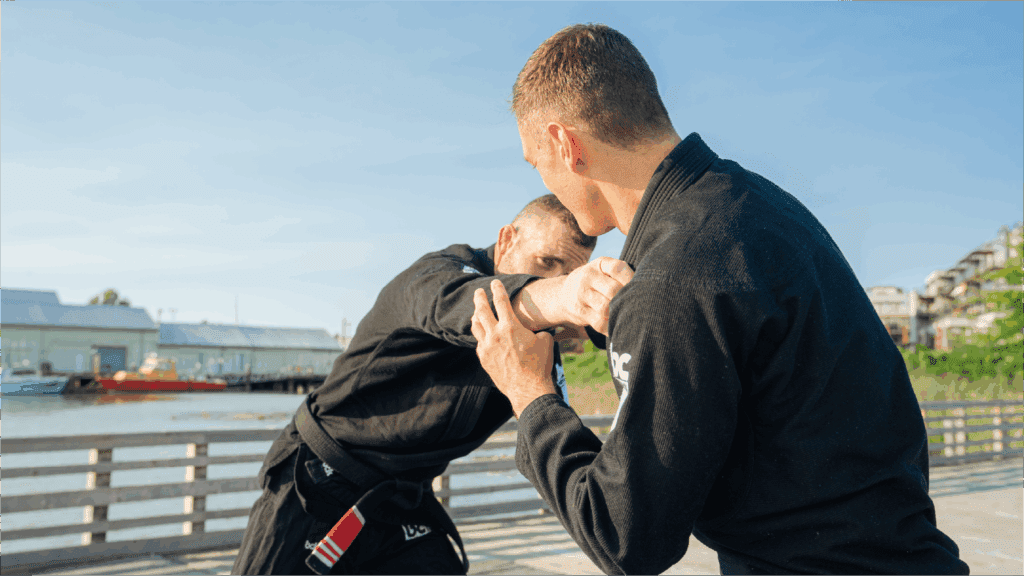Jiu-jitsu is constantly evolving and becoming more competitive at the highest levels. It’s become an arms race to develop systems of passing that chain together well in an attempt to make it hard to defend. It is important to have guard passes that connect so that when your opponent defends correctly, you are already transitioning to the next pass. Less than a decade ago many classes would be taught by showing a single move with the hope to replicate it in sparring or competition. Now we have a much better method of showing a series of techniques that connect to form a system. In addition to the techniques, we have concepts that can help be a compass in these dynamic positions that happen quickly during sparring.
With kids learning jiu-jitsu as young as 4, they have the potential to grow much faster during their youth, and by the time they become black belts around 20 years old, they have the potential to elevate the sport to a new level. We are currently witnessing the kids who started young take over the sport!
Continue reading below to learn the ins and outs of guard passing!
Which guard passes should I know?
If we look at one of the successful GI schools Art Of Jiu Jitsu, we can see they have around 7 passes they use consistently. Interestingly, while most of the top athletes use these same passes, they connect them differently from different positions. For example: From the Headquarters position you may see Athlete A try to knee cut, then if it fails, long step which will transition into a leg drag for a finish. Athlete B may choose to start with a leg drag, then if it fails, knee cut which transitions into a long step. The idea here is there is no “one size fits all” for each situation. If you know how each pass works then you can create a personal approach based on your body type and athleticism.
To be able to accomplish this at a high level you must first learn each pass and become proficient with drilling the move with precision. Once that goal is complete it’s time to move on to position sparring. We can define a position to start from and add resistance, say 50% and build up from there. This will allow you to see what works, and what doesn’t and try again. Positional sparring allows us to recognize patterns, analyze them and correct them. It’s a lot like the scientific method as shown in the image below:

Can you show me some examples of high level passing?
One of the best modern guard passers is Tainan Dalpra. Watch the Youtube video below, showing the Art of Jiu Jitsu chain style of passing:
You mentioned there are 7 passes, what are they?
They are as follows:
- Longstep
- Leg Weave
- Leg Trap
- Knee Slide
- Shin Slice
- Windshield Wiper
- Top Spin Transition
Do these passes work in GI and NO GI?
Some of them which are less reliant on grips will work well in no gi. A good example would be the knee cut. You can see any athletes at the highest level of the sport use this pass with extreme effectiveness. If you plan on training both gi and no gi, it would be beneficial to choose a passing style that works well for both.
Ok, I understand the passes, but I am still having trouble pulling them on with active resistance. What can I do?
For any new skill, it is going to take lots of practice to develop and refine. It’s important to know why a particular pass is failing. Are you performing the technique correctly? This is a great opportunity to ask your coach to watch you try the move during sparring and provide feedback. Another idea would be to watch a world-class black belt attempt the move in competition. Did he or she encounter a similar problem? If so what did they use to overcome the problem? It could also be that you are performing the move correctly, your opponent defends correctly and it’s time to move on to another pass. You could also ask for permission to film your sparring with someone who is giving you a difficult time performing the move and then use the video to analyze what went wrong. At Advantage, we strive to show effective techniques that work at the highest level of competition and spend time studying these positions and systems so we can teach them to you in class. We will do our best to accommodate all body types and sizes. You can help us by showing up to class consistently so we can build on previous lessons and tie them all together.
Get Started with Jiu Jitsu
If you’re looking to get into Jiu Jitsu, or you’d like to come try out a class, we’d love to have you! Check out our what to expect page, and book your first class FREE!




